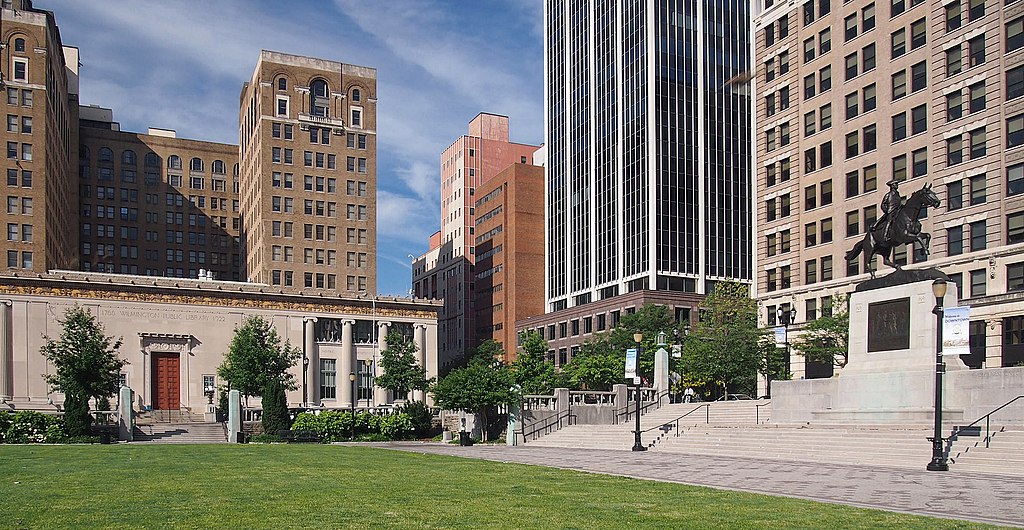Headlines tallying the increased number of shooting incidents in big cities have taken over the local newspapers and broadcast media.
As the COVID-19 pandemic ushered in stay-at-home orders, some hoped community-based gun violence would subside. It has not. Rates of gun assaults rose at the end of May, according to data from 17 cities, with Chicago experiencing the largest increase. According to recent data collected by the New York Times, murder is up 21.8 percent in 36 big cities. A similar study done by the Wall Street Journal suggests murders have increased by about 24 percent. While crime initially dipped at the beginning of the Covid-19 pandemic, violent crime and homicides are now rising sharply around the country. Sadly, those most affected are already struggling to survive the many ills of the coronavirus pandemic.
The big city gun violence surge is a hot topic in the national news and rightfully so. But what they overlook is the impact of gun violence and COVID in smaller cities such as Wilmington, Delaware. While Wilmington is no big city, its residents are seeing a similar trend in the increase of shootings like major cities across the country. In one particularly brutal week (July 5th – July 12th), Wilmington experienced six shooting incidents with 11 victims.
“In the small-city context, issues like gun violence are exacerbated because everyone knows someone affected the shooters and the victims have families,” says Brooklynn Hitchens, a sociologist, Wilmington-native, and researcher with the Wilmington PAR Street team. “The likelihood of someone hearing news about the shooting is high, and in a small city, you have to go to the grocery store and see these people. They live down the block or around the corner- you know them.”
The pandemic has brought to the forefront the inequities that Wilmington has faced for years. “We’re seeing people laid-off of jobs, struggling in new ways, while the studies are showing that Black people are dying disproportionately from this virus,” says Hitchens.
For Wilmington, a city whose population is 58.3 percent Black, Hitchens raises an important point.
Communities of color have historically endured the unequal impact of city gun violence driven by decades of systemic and structural racial discrimination, redlining, inequities in health care, education, and exposure to environmental hazards. These are some of the same factors that made communities of color more impacted by and vulnerable to COVID-19’s devastating and deadly effects. It also partly explains why Black Americans are almost twice as likely to die from COVID-19 as white Americans, and more than four times more likely to die from a firearm homicide.
“And what is often overlooked is who is left to carry the brunt of the stress in trying to keep the family together and trying to keep the community together,” says Hitchens, whose latest work looks at women’s role in surviving loss while managing home and community needs.
Pastor Margaret Guy knows this role all too well. As someone who lost her grandson to gun violence, she is familiar with picking up the pieces for her family and community. Since 2012, she has dedicated her time to advocating against gun violence while comforting those affected through Stop The Violence Prayer Chain Foundation, Inc. Although the doors to the community center they once occupied have closed, Guy continues to work with youth ages 4 to 14 in Wilmington through the pandemic.
“They see everything that’s going on around them, but sometimes don’t have the words to really share,” says Guy. “I get them out to a park or somewhere to do lessons, and for many of them, it’s the only time their parents will let them outside due to fear of the violence and the pandemic.”
Nationwide, researchers and analysts are trying to figure out the complex cause-and-effect of increased gun violence during the pandemic. New studies are coming out weekly to try to make sense of the current state of affairs. Suggestions range from the frustration of stay-at-home orders to the recession to the conclusion that there is no correlation between the pandemic and gun violence.
Regardless, the factors behind city gun violence before the COVID-19 crisis have only intensified in the wake of the pandemic. As we seek answers and solutions, Guy’s advice is to find a way to do your part in the community.
“The officials have their work cut out for them, but in the meantime, it’s up to me to love on the kids of this city and show them that we care.”
This piece is part of a larger series to explore Delaware communities’ responses to the COVID-19 pandemic. If you have any information to share, please email me at [email protected]. Help us tell these stories by contributing.

